The Badrinath Dham | Badrinath temple
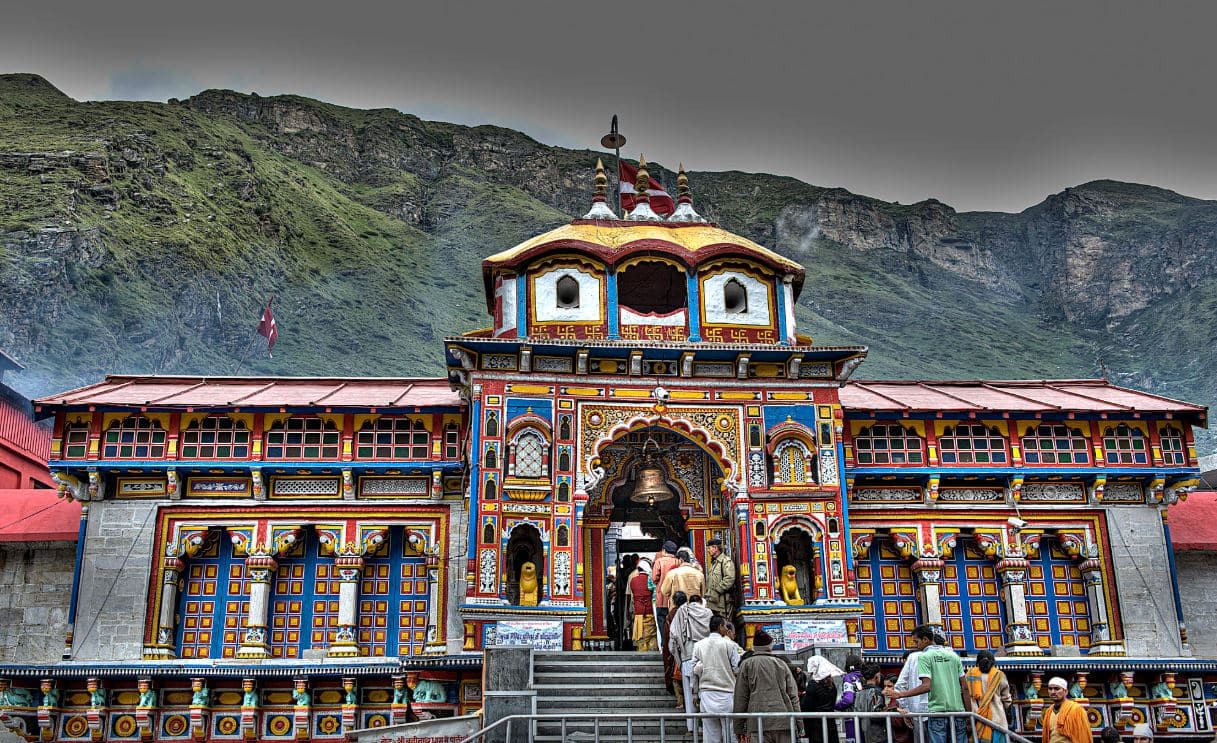 |
| The Badrinath Dham | Temple |
Badrinath or Badrinarayan Temple is a Hindu Temple dedicated to Lord Vishnu which is situated in the town of Badrinath in Uttarakhand, India. The temple and town form one of the four Char Dham and Chota Char Dham pilgrimage sites.
The temple is also one of the 108 Divya Desams dedicated to Vishnu, who is worshipped as Badrinath—holy shrines for Vaishnavites.It is open for six months every year (between the end of April and the beginning of November), because of extreme weather conditions in the Himalayan region.
 |
| Dynamic Weather at Badrinath Dham |
The temple is located in Garhwal Hill Tracks in Chamoli district along the banks of Alaknanda River at an elevation of 3,133 m (10,279 ft) above the mean sea level. It is one of the most visited pilgrimage centers of India, having recorded 1,060,000 visits.
The image of the presiding deity worshipped in the temple is a 1 ft (0.30 m), the black stone statue of Vishnu in the form of Badrinarayan. The statue is considered by many Hindus to be one of eight swayam vyakta kshetras, or self-manifested statues of Vishnu.
The image of the presiding deity worshipped in the temple is a 1 ft (0.30 m), the black stone statue of Vishnu in the form of Badrinarayan. The statue is considered by many Hindus to be one of eight swayam vyakta kshetras, or self-manifested statues of Vishnu.
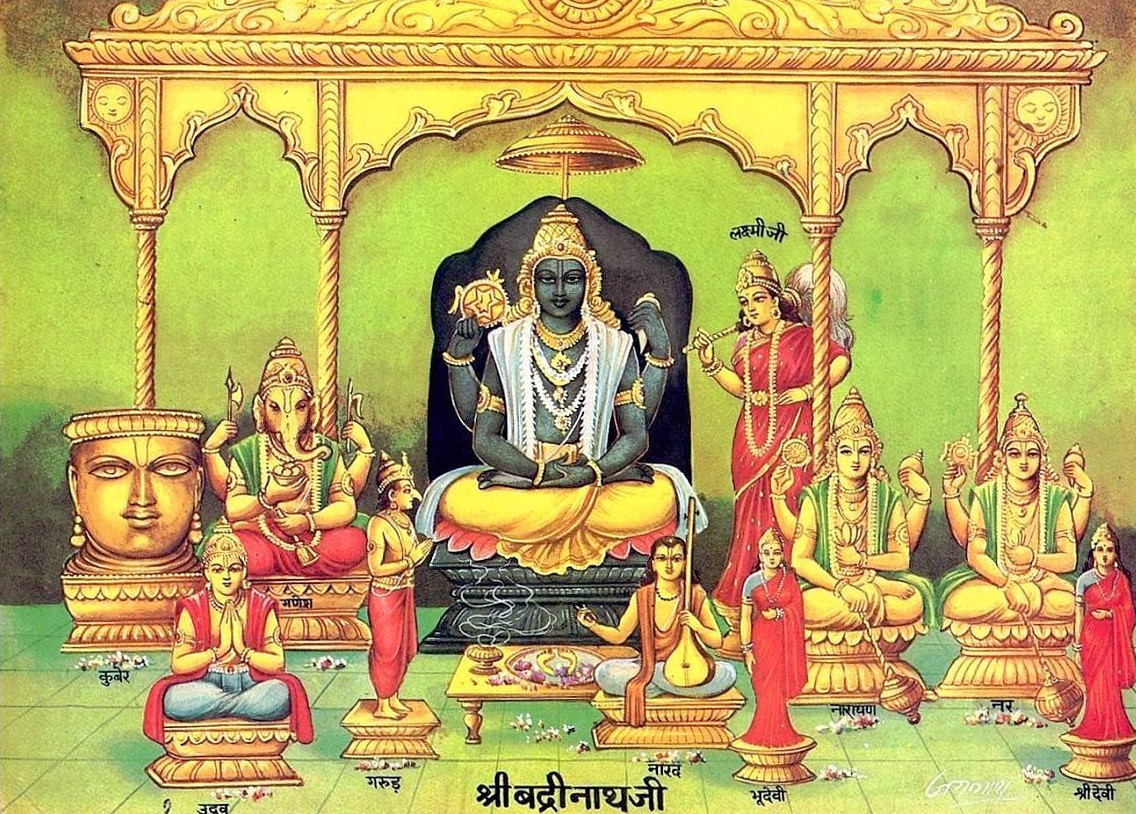
Mata Murti Ka Mela, which commemorates the descent of river Ganges on mother earth, is the most prominent festival celebrated in the Badrinath Temple. Although Badrinath is located in North India, the head priest, or Rawal, is traditionally a Nambudiri Brahmin chosen from the South Indian state of Kerala.
The temple is mentioned in Ancient Religious texts like Vishnu Purana and Skanda Purana. It is glorified in the Divya Prabandha, an early medieval Tamil canon of the Azhwar saints from the 6th–9th centuries.
The temple is mentioned in Ancient Religious texts like Vishnu Purana and Skanda Purana. It is glorified in the Divya Prabandha, an early medieval Tamil canon of the Azhwar saints from the 6th–9th centuries.
The temple is located in Garhwal Hill Tracks along the banks of the Alaknanda River in Chamoli district in Uttarakhand. The hill tracks are located 3,133 m (10,279 ft) above the mean sea level. The Nar Parbat mountain is located opposite to the temple, while the Narayana Parbat is located behind the Neelkanth Peak.
The temple has three structures: the Garbhagriha (sanctum), the Darshan Mandap (worship hall), and Sabha Mandap (convention hall). The conical-shaped roof of the sanctum, the garbhagriha, is approximately 15 m (49 ft) tall with a small cupola on top, covered with a gold gilt roof. The facade is built of stone and has arched windows. A broad stairway leads up to the main entrance, a tall, arched gateway. Just inside is a , a large, pillared hall that leads to the sanctum, or main shrine area. The walls and pillars of the hall are covered with intricate carvings.
The main shrine houses the 1 ft (0.30 m) Shaligram (black stone) idol of Lord Badrinarayana, which is housed in a gold canopy under a Badri Tree. The idol of Lord Badrinarayana shows Him holding a Shankha (conch) and a Chakra (wheel) in two of His arms in a lifted posture and the other two arms resting on His lap in a Yogamudra (Padmasana) posture. The sanctum also houses images of the god of wealth—Kubera, sage Narada, Uddhava, Nar and Narayan.
There are fifteen more images that are also worshipped around the temple. These include that of Lakshmi (the consort of Vishnu), Garuda (the vahana of Narayan), and Navadurga, the manifestation of Durga in nine different forms. The temple also has shrines of Lakshmi Narasimhar and for saints Adi Shankara (ad 788-820), Nar and Narayan, Ghantakarna, Vedanta Desika and Ramanujacharya. All the idols of the temple are made of black stone.
The Tapt Kund, a group of hot sulphur springs just below the temple, are considered to be Medicinal; many pilgrims consider it a requirement to bathe in the springs before visiting the temple. The springs have a year-round temperature of 55 °C (131 °F), while outside temperature is typically below 17 °C (63 °F) all year round. The two water ponds in the temple are called Narad Kund and Surya Kund.
 |
| Narad Kund |
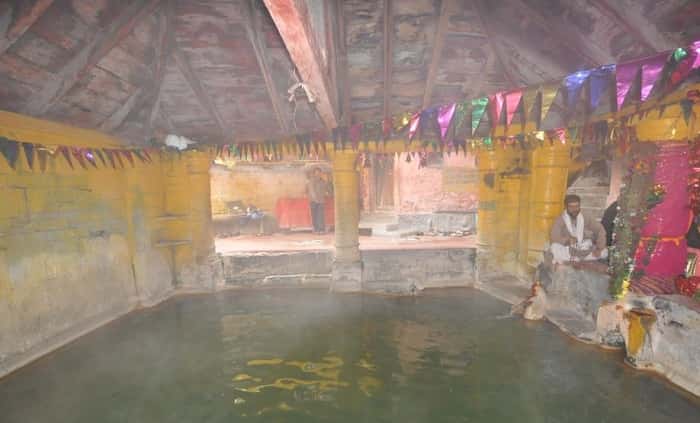 |
| Surya Kund |
- Beauty Of Badrinath Dham :-
It is very difficult to us, to describe about the nature of Badrinath Dham and also it is most difficult to describe about the beauty of Badrinath Dham in words.
The Best Views Of Life Looks Like Heaven Of God | Which Purifies Our Souls
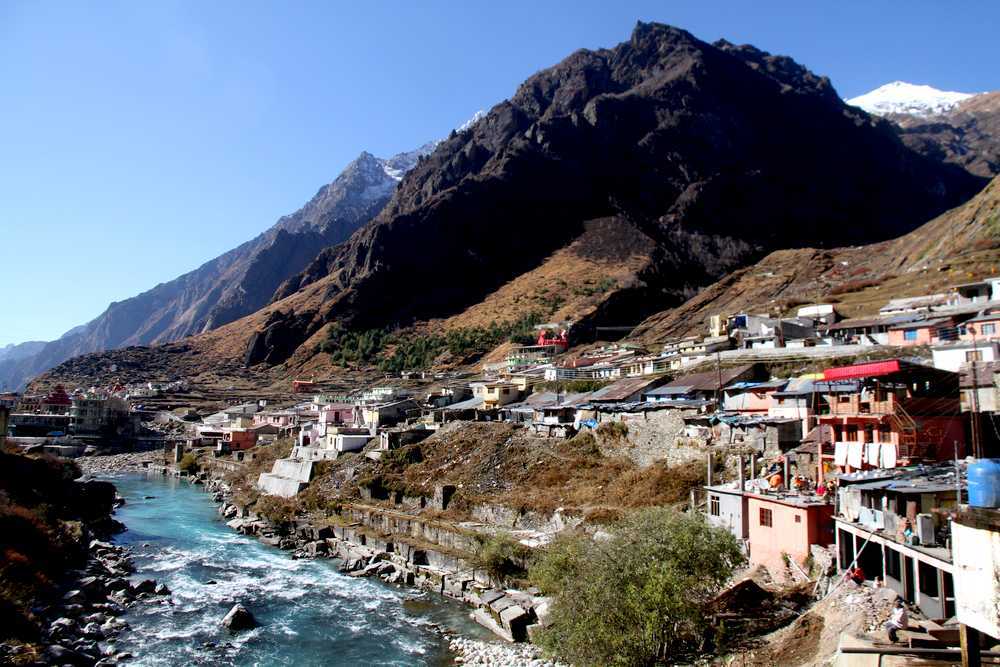
Best Views In Winter Season,
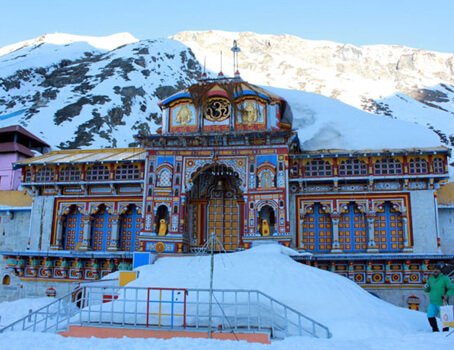
The beauty of Badrinath Dham is god gifted and it can be seen, it looks like heaven.
 |
| Badrinath Dham Looks Like That from Top Of A Mountain |
River View Is The Best View To See the Beauty Of That Place Where The River Exist,


The View Of Badrivalley

- History Of Badrinath Dham :-
There is no historical record about the temple, but there is a mention of the presiding deity Badrinath in Vedic scriptures (c. 1750–500 bc). According to some accounts, the temple was a Buddhist Shrine till the 8th century and Adi Shankara converted it to a Hindu temple. The architecture of the temple resembling that of a Buddhist Vihara (temple) and the brightly painted facade which is a typical of Buddhist Temples leads to the argument. Other accounts relate that it was originally established as a pilgrimage site by Adi Shankara in the ninth century. It is believed that Adi Shankara resided in the place for six years from ad 814 to 820. He resided six months in Badrinath and the rest of the year in Kedarnath Dham.
Hindu followers assert that he discovered the image of Badrinath in the Alaknanda River and enshrined it in a cave near the Tapt Kund hot springs. A traditional story asserts that Adi Shankara expelled all the Buddhists in the region with the help of the Parmar Ruler king Kanak Pal. The hereditary successors of the king governed the temple and endowed villages to meet its expenses. The income from a set of villages on the route to the temple was used to feed and accommodate pilgrims. The Parmar Rulers held the title "Bolanda Badrinath", meaning speaking Badrinath. They had other titles, including Shri 108 Basdrishcharyaparayan Garharaj Mahimahendra, Dharmabibhab, and Dharamarakshak Sigamani.
 |
| Ancient Badrinath Dham |
Hindu followers assert that he discovered the image of Badrinath in the Alaknanda River and enshrined it in a cave near the Tapt Kund hot springs. A traditional story asserts that Adi Shankara expelled all the Buddhists in the region with the help of the Parmar Ruler king Kanak Pal. The hereditary successors of the king governed the temple and endowed villages to meet its expenses. The income from a set of villages on the route to the temple was used to feed and accommodate pilgrims. The Parmar Rulers held the title "Bolanda Badrinath", meaning speaking Badrinath. They had other titles, including Shri 108 Basdrishcharyaparayan Garharaj Mahimahendra, Dharmabibhab, and Dharamarakshak Sigamani.
The throne of Badrinath was named after the presiding deity; the king enjoyed ritual obeisance by the devotees before proceeding to the shrine. The practice was continued until the late 19th century. During the 16th century, the King of Garhwal moved the Murti (Statue) to the present temple. When the state of Garhwal was divided, the Badrinath Temple came under British Rule but the King of Garhwal continued as the chairman of the management committee.The selection of priest is done after consultation between Garhwal and Travancore Royal Families.
The temple has undergone several major renovations due to its age and damage by an avalanche. In the 17th century, the temple was expanded by the Kings of Garhwal. After significant damage in the great 1803 Himalayan Earthquake, it was largely rebuilt by the King of Jaipur. It was still under renovation as late as the 1870s but these were completed by the time of the First World War. At that time, the town was still small, consisting of only the 20-odd huts housing the temple's staff, but the number of pilgrims was usually between seven and ten thousand. The Kumbh Mela festival held every twelve years raised the number of visitors to 50,000. The temple also enjoyed revenue from the rents owed to it by various villages bequeathed by various Rajas (Kings).
During 2006, the state government announced the area around Badrinath as a no construction zone to Curb Illegal Encroachment.
- The Legend In Badrinath Dham :-
According to Hindu legend, god Vishnu sat in meditation at this place. During his meditation, Vishnu was unaware of cold weather. Lakshmi, his consort, protected him in the form of the Badri Tree (jujube or Indian date). Pleased by the devotion of Lakshmi, Vishnu named the place Badrika Ashram. According to Atkinson (1979), the place used to be a Jujube Forest, which is not found there today. Vishnu in the form of Badrinath is depicted in the temple sitting in the Padmasana posture. According to the legend, Vishnu was chastised by sage Narada, who saw Vishnu's consort, Lakshmi, massaging his feet. Vishnu went to Badrinath to perform austerity, meditating for a long time in padmasana.
 |
| Lord Vishnu (Narayana)In Padmasana |
- Literary Mention Badrinath Dham :-
The temple finds mention in several ancient books like Bhagavata Purana, Skanda Purana and Mahabharata.
According to the Bhagavata Purana, "here in Badrik Ashram the personality of Godhead (Vishnu), in his incarnation as the sages Nar and Narayana, had been undergoing great penance since time immemorial for the welfare of all living entities".
The Skanda Purana states that "here are several sacred shrines in heaven, on earth, and in hell; but there is no shrine like Badrinath". The area around Badrinath is also celebrated in Padma Purana as abounding in spiritual treasures.
The Mahabharata revered the holy place as the one which can give salvation to devotees arriving close to if, while in other holy places they must perform religious ceremonies.
The temple is revered in Nalayira Divya Prabandham, in 11 hymns in the 7th–9th century Vaishnava canon by Periazhwar and in 13 hymns in Thirumangai Azhwar. It is one of the 108 Divyadesam dedicated to Vishnu, who is worshipped as Badrinath. The temple is referred as Tiruvatariyacciramam in Tamil literature.
According to the Bhagavata Purana, "here in Badrik Ashram the personality of Godhead (Vishnu), in his incarnation as the sages Nar and Narayana, had been undergoing great penance since time immemorial for the welfare of all living entities".
 |
| Bhagavata Purana |
The Skanda Purana states that "here are several sacred shrines in heaven, on earth, and in hell; but there is no shrine like Badrinath". The area around Badrinath is also celebrated in Padma Purana as abounding in spiritual treasures.
 |
| Skanda Purana |
The Mahabharata revered the holy place as the one which can give salvation to devotees arriving close to if, while in other holy places they must perform religious ceremonies.
 |
| Mahabharata |
The temple is revered in Nalayira Divya Prabandham, in 11 hymns in the 7th–9th century Vaishnava canon by Periazhwar and in 13 hymns in Thirumangai Azhwar. It is one of the 108 Divyadesam dedicated to Vishnu, who is worshipped as Badrinath. The temple is referred as Tiruvatariyacciramam in Tamil literature.
- Festivals and religious practices in Badrinath Dham :-
 |
| Badrinath Temple Nightview |
The most prominent festival held at Badrinath Temple is Mata Murti Ka Mela, which commemorates the descent of the river Ganges on mother earth. The mother of Badrinath, who is believed to have divided the river into twelve channels for the welfare of earthly beings, is worshiped during the festival. The place where the river flowed became the holy land of Badrinath.
 |
| Badrivalley River View |
The Badri Kedar festival is celebrated during the month of June in both the temple and the Kedarnath temple. The festival lasts for eight days; artists from all over the country perform during the function.
 |
| Celebrating Festivals In Badrinath Dham |
The major religious activities (or pujas) performed every morning are Mahabhishek (ablution), Abhishek, Gitapath and Bhagavat Puja, while in the evening the pujas include Geet Govinda and Aarti. Recital in vedic scripts like Ashtotram and Sahasranama is practised during all the rituals. After Aarti, the decorations are removed from the temple of Badrinath and Sandalwood Paste is applied to it.
The paste from the temple is given to the devotees the next day as Prasad during the Nirmalaya Darshan. All the rituals are performed in front of the devotees, unlike those in some Hindu temples, where some practices are hidden from them. Sugar balls and dry leaves are the common prasad provided to the devotees. From May 2006, the practise of offering Panchamrit Prasad, prepared locally and packed in local bamboo baskets, was started.
The temple is closed for winter on the auspicious day of Bhatridwityia or later during October–November. On the day of closure, Akhanda Jyothi, a lamp is lit filled with Ghee to last for six months. Special pujas are performed on the day by the Chief Priest in the presence of pilgrims and officials of the temple. The pictures of Badrinath is notionally transferred during the period to the Narasimha temple at Jyotirmath, located 40 mi (64 km) away from the temple. The temple is reopened around April–May on Akshaya Tritiya, another auspicious day on the Hindu Calendar. Pilgrims gather on the first day of opening of the temple after the winter to witness the Akhanda Jyothi.
The temple is one of the holy places where the Hindus offer oblations to ancestors with the help of the priests. Devotees visit the temple to worship in front of the picture of Badrinath in the sanctum and have a holy dip in Alaknanda River. The general belief is that a dip in the tank purifies the Soul.
- To Visit Badrinath Dham:-
In 2012, the temple administration introduced a token system for visitors to the temple. Tokens indicating the time of visit were provided from three stalls in the taxi stands.
Proof of identity is mandatory to enter the temple. The temple is reached from Rishikesh, located 298 km (185 mi) away via Devprayag, Rudraprayag, Karnaprayag, Nandaprayag, Jyotirmath, Vishnuprayag and Devadarshini. From Kedarnath Temple, visitors can follow the 243 km (151 mi)-long Rudraprayag route or the 230 km (140 mi)-long Ukhimath and Gopeshwar route.
Badrinath Dham is one of that places which is completely Holy places of India.Don't think about Badrinath Dham, just prepare yourself for a trip and just go to the Badrinath Dham and see the actual beauty, heaven, and some holy things at there and feel yourself in the Nature's Lap, which is the best part of your life.
So just visit Badrinath Dham.
 |
| Gopeshwar Route to Badrinath Dham |
It's holy place, so please see the following tips before you Visit at Badrinath Dham :
- At an elevation of more than 3000 metres, the weather at Badrinath is always chilly no matter when you are visiting. It is advisable to carry ample woolen clothing.
- The pilgrimage to Badrinath is not as arduous as Kedarnath, however it is normal to feel little dizzy due to low oxygen content in the air. Make sure to get yourself checkedThe pilgrimage to Badrinath is not as arduous as Kedarnath, however it is normal to feel little dizzy due to low oxygen content in the air. Make sure to get yourself checked with a physician prior to the pilgrimage. with a physician prior to the pilgrimage.
- Photography may be prohibited inside the temple, especially inside sanctum sanctorum. Please abide by the guidelines outlined by temple authorities.
- Travelling to Uttarakhand in monsoons is little risky as the region witness road blockages due to frequent landslides. Best time to visit Badrinath is from May-April and September-October.
- And Please, respect the place by refraining from alcohol and non-vegetarian food in the Holy Town of Badrinath.





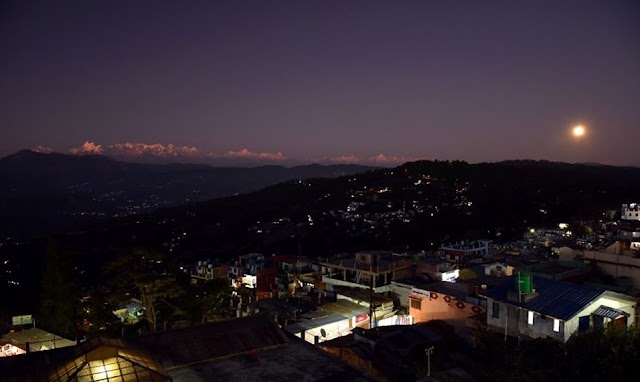

4 Comments
Great place of my Uttarakhand 🌈♥️
ReplyDeleteThank you for your articles that you have shared with us. Hopefully you can give the article a good benefit to us. Badrinath Temple
ReplyDeleteGood information. badrinath temple story
ReplyDeleteJai badrvishal
ReplyDelete